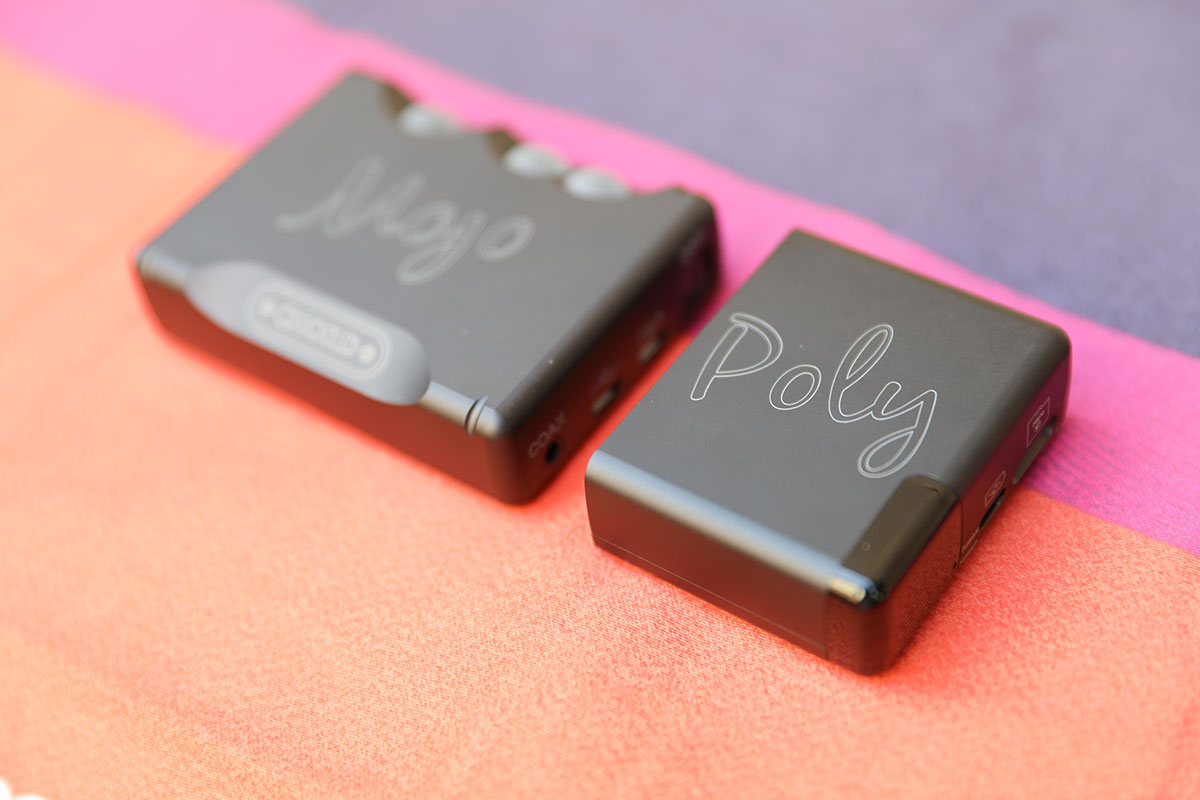
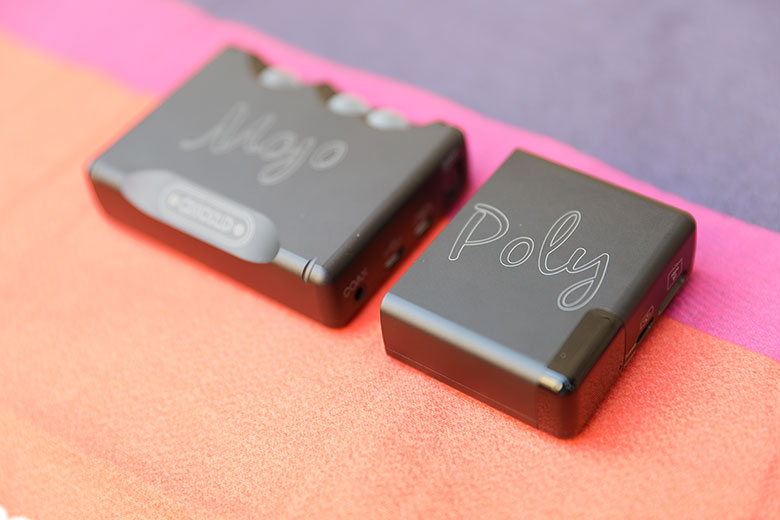
The Master Switch


The Master Switch
App: Yes
Roon Ready: Yes
File Handling: 32 bit / 768kHz
What We Like: Amazing sound, sweet concept, cool features.
What We Don't: Usability issues, only for those who own a Mojo DAC.
See the Chord Electronics Poly
We take accessories seriously here at TMS. Far more seriously than other sites. That’s because we believe that you have to look at the entire experience when reviewing an audio product, and that includes the little cables and gizmos that come with it. But we have never, in all our time doing this, come across an accessory like the Chord Poly. In this review, we break down the Poly’s concept, sound, design, packaging and accessories, specs and more. To see how it stacks up, check out our list of the best music streamers.
Normally, when reviewing audio gear, we start off by talking about the sound. It is, after all, the reason we’re here. But we can’t do that with the Chord Electronics Poly. Because if this review is going to make any kind of sense, we have to explain what the Poly is, and what it’s meant for. The $749 Poly isn’t something whose function can be immediately divined from a single look. It’s not a speaker, or an amp, or even a music streamer. It’s something truly unusual.

To understand what the Chord Poly is and how it works, we have to talk about another piece of equipment first. You may or may not have heard of the Chord Electronics Mojo (full review here), a $479 headphone amp/DAC designed to be fully portable. It’s designed to be one of the best ways of improving your sound on the go, and even a few years after its release, it still sounds terrific. It may be no larger than a pack of cigarettes, but it will kick your sound up the backside.
The thing about the Mojo is that it uses wired connections. You have to connect it to a source, like your phone, and you have to connect headphones to it. And the folks at Chord, who aren’t exactly known for sitting on their laurels, decided this wasn’t good enough. Other companies might have released a version 2.0, with a Bluetooth chip slapped into it and perhaps a fresh coat of paint on the outside, but not Chord. Chord did something that is frankly a bit weird. (Then again, have you seen their Dave DAC? This company’s not afraid of being different.)
The Poly is a simple attachment that connects onto the back of your Mojo. Once you’ve put the two together, the Poly act as a wireless streamer. Suddenly, your Mojo can get music over Wi-Fi. It can function as a Roon endpoint, receive music via Bluetooth, DLNA, and Apple AirPlay. It can even take a microSD card, preloaded with music. The Poly completely eliminates the need for wires at the input end, even if you still need a pair of wired headphones to listen. Essentially, it turns the Mojo – already an absolutely phenomenal DAC – into a completely portable, wireless music solution.
It’s daring and bizarre and, as far as we can tell, completely unprecedented. You can’t use the Poly with anything other than a Mojo, which means you have to have a Mojo first, although it is possible to buy both of them in a single package. The Poly is a product for a very small niche in the even smaller world of high-end portable audio. So you might ask, then, why we are reviewing it. The answer is that - in sound terms, at least - it’s one of the most brilliant music streamers we’ve ever tested.
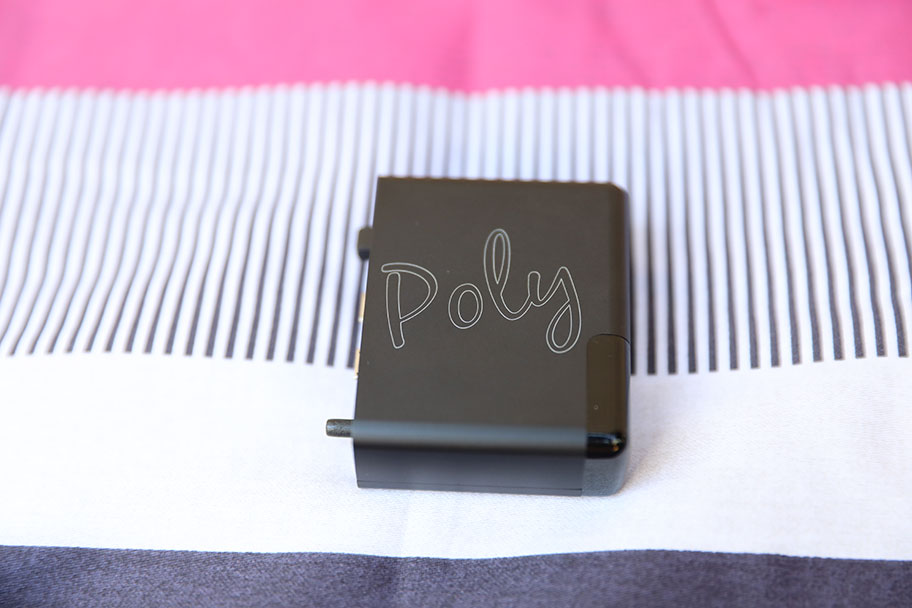
The actual Chord Mojo is relatively old now. When he reviewed it back in 2017, our writer Niko Tsonev said: “Words like clarity, depth and detail come to mind - you can hear deep into the mix and the sense of dynamics are also immensely improved...Mojo’s soundstage is wide and airy, very much the audio equivalent to a widescreen movie experience and nothing in the mix feels squashed - instruments and voices feel vibrant, with a lot of separation.”
Now imagine all that, only with a little extra. A Chord Mojo-Poly combo is like one of those reissued and remastered albums, where they’ve taken all the original songs and made them cleaner, sharper, more dynamic. It would have been so easy for Chord just to make the Poly a functional machine – one that adds wireless streaming, but has absolutely no effect on the sound quality. Instead, they went in the opposite direction. Whatever digital jiggery-pokery is happening here, it makes the audio quality even better than it already was.
The key takeaway here, we think, is insight. The Poly gives you an incredible level of depth and detail, ensuring that you can hear absolutely everything going on in your chosen song. It really is quite remarkable. Against a similarly-priced digital audio player, the iBasso DX220 ($979), and it’s quite clear that the Mojo-Poly combo is the winner. The iBasso sounds good, but the Poly is just on another level. We’re talking the kind of crisp detail and powerful energy that we would expect from an amplifier several times the size. Given that this is all coming from digitally transmitted audio, it really is quite spectacular.
The Poly also beats the only device on the market that matches it for functionality - the Sonore microRendu. The microRendu is a little box you can connect to any USB device to make it Internet-capable, and there’s no question in our minds that the Poly is the superior option. While the microRendu is a bit more agnostic, in that you can connect to any device no matter what the manufacturer, the Poly just sounds better. It delivers outstanding realism no matter what genre of music you listen to, and it truly surprised us just how good the combined Mojo-Poly sound quality was.
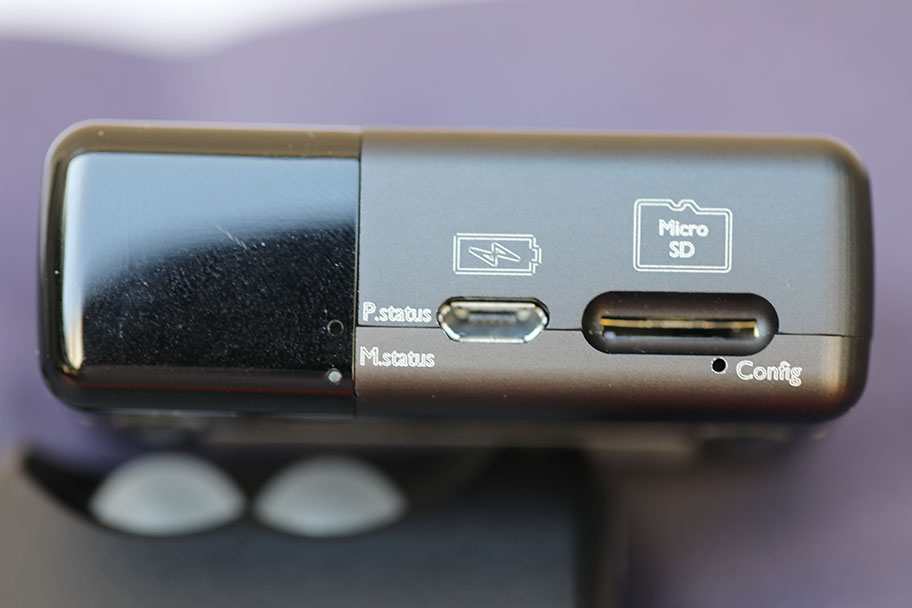
There are several methods of getting audio onto the Poly, and it’s worth talking about how they differ. The best way to do it, we’d argue, is over Wi-Fi. Using the Poly as an endpoint for the Roon audio software is a joy. While this arguably makes it slightly less portable, in that you will need to be in the vicinity of a Wi-Fi network, it does mean that you don’t need to be tied to a desktop amp. If you’re walking around your house, cooking, doing the laundry, cleaning, or whatever, you’ve now got a way to listen to exceptionally high quality audio while doing it. It also sounds great using DLNA functionality, and the included SD card slot means that you can listen to audio files in their original resolution without any wireless transmission whatsoever. As far as we can tell, there’s no limit to the SD card size.
Of course, Wi-Fi isn’t the only trick here. The Poly also boasts Bluetooth 4.1. We think the sound quality suffers a little here, no doubt due to the fact that Bluetooth 4.1 really is quite dated now. Far less-expensive options, like the FiiO M11 (full review here), have better Bluetooth. We found that the same applied to Apple AirPlay. We don’t want to overstress this: the difference in sound quality between Bluetooth and Wi-Fi really isn’t much, but it’s worth bearing in mind.
You’d expect the Poly to allow a wide variety of files and file sizes, and it certainly does. You get access to just about every file type you can imagine, from MP3 to DSD, and at a sufficiently-high resolution to satisfy even the most demanding listener. You can listen to regular audio all the way up to 768 kHz, and DSD audio all the way up to DSD256 (here’s an explainer if you don’t know what that is). We mostly listened to high resolution audio via Tidal. Although the Poly doesn’t play nice with the MQA audio format, surprisingly, we definitely didn’t have an issue with the sound quality. We also enjoyed features like Bit Perfect mode, which disable the volume control on the source device to provide a better signal.
Unfortunately, once you start looking beyond the sound quality and the so-crazy-it-just-might-work concept, the Poly starts to reveal quite a few problems…

Here’s the thing about the Poly: it’s an absolutely brilliant machine for delivering high quality wireless sound. It is a staggering technical achievement and we can’t believe this much functionality has been encoded into something this tiny. But the problem is, while it offers all these remarkable features, actually using the Poly – the day-to-day act of getting to do what you want – is a giant pain in the backside.
This is a problem that starts with the manual itself. We aren’t usually interested in talking about manuals, because yawn, but it’s worth mentioning here. You need to figure out how to get the Poly started – there’s no ‘on’ button – and so you will inevitably turn to the manual. It’s digital only, which is fine, but the resultant PDF simply hasn’t been formatted for the screen. It’s just the original printed manual, which was one of those horrible unfolded things. It’s a chore to navigate, and to make matters worse, it doesn’t always give you the information you need.
Before you use the Poly, you have to charge it. This isn’t quite as simple as plugging it into a USB charger via the included micro-USB cable. You have to plug it in, then unplug it, then replug it. This, in theory, turns the Poly on and activates charging, but we couldn’t get it to work. Despite hours of charging, the Poly simply wouldn’t turn on. It was only after a bit of back-and-forth with Chord themselves that we found out that you had to perform the initial connection for 10 seconds – no more, no less. Something that, as far as we could tell, wasn’t in the manual. Now, while Chord were perfectly responsive in helping us set this up, and it is entirely possible that we simply misread things here, this process is just ridiculous. We appreciate that the Poly is an absurdly complex piece of technology, but at the very least, charging it and turning it on shouldn’t be so absurdly complex.
Perhaps sensing that this machine was becoming too complicated, Chord have put together a very capable app, called GoFigure. It’s designed to help you get up and running, and to control all the settings of the Poly. Once you have it set up, it works well, but we had a hell of a time getting it to detect our Poly. We aren’t entirely sure why this is, but in any case, we forgave it the moment we started using the app. It’s simple and effective, and makes using the Poly breeze.
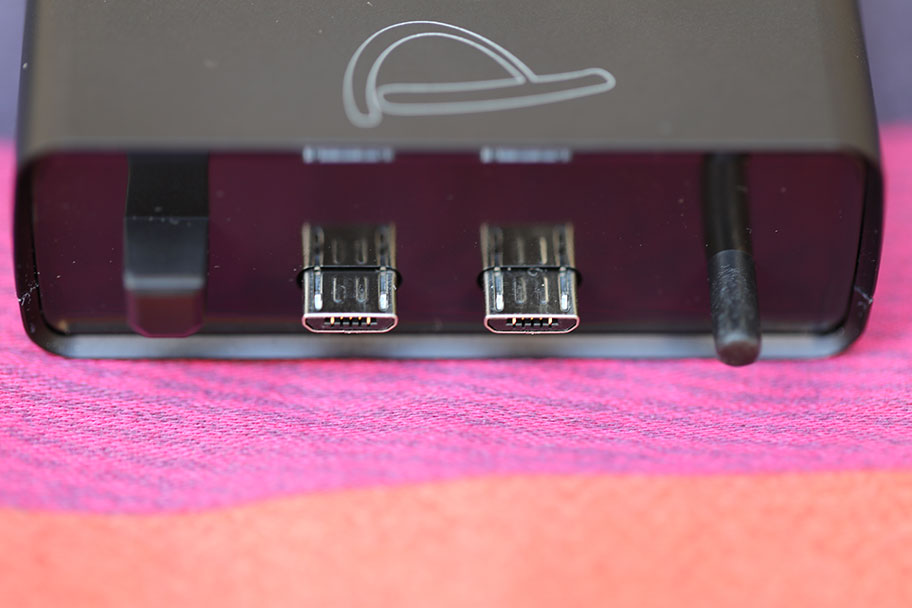
The GoFigure app is only available for newer phones (both iOS and Android), and this is where we uncovered another problem. Not with the fact that the app only works if you have a newish phone – most people will - but if you don’t, you’ll be in for a bad time. We’re currently using a very old OnePlus2, and while hunting down someone with a new phone to test the app on, we decided we’d see if we could set up the Poly manually. Here’s a pro tip: don’t. Seriously, don’t do it. It is such a convoluted, counterintuitive process that we can’t even imagine how it came to be. It’s made significantly worse by the fact that there are no external buttons on the Poly - just an internal one that you have to use an included pin to press. It’s finicky and annoying and we hate it. It’s made worse by the fact that the only way you can tell what you’re doing is to have headphones connected to the Mojo, upon which you will be subjected to the kind of robotic voice that went out of style around the time that answering machines were a thing.
Chord have always been a little idiosyncratic. Their control schemes often take some getting used to. Where other people would rely on digital displays and clear labels, they use colored baubles and obscure jargon. Weirdly, it’s usually quite charming – we loved the controls on the Mojo, and on the Hugo 2 DAC (full review here). But in this instance, it’s not idiosyncratic, it’s just annoying and makes the Poly a chore to use.
While we may be making a big deal out of this, we can’t shake the feeling that something went very wrong here. At some point, someone at Chord decided that this would be a perfectly acceptable control scheme, and it just isn’t. We have to judge the Poly in its entirety, not just based on one aspect, and any control that doesn’t rely on the app is flat-out terrible. We appreciate that this is an immensely complex, technical piece of machinery. We absolutely applaud the ambition here, and the singular vision. But there are plenty of aspects of the Poly that leave much to be desired.
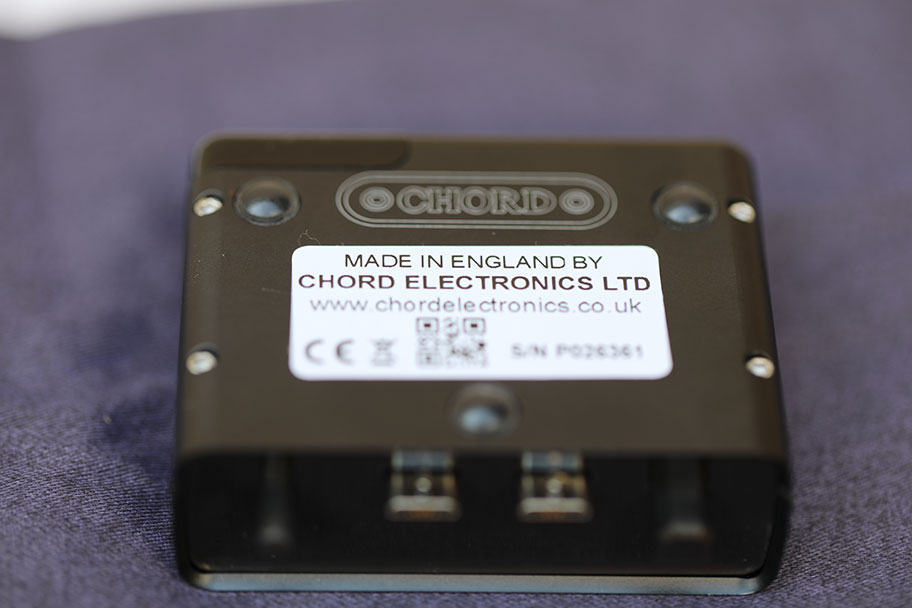
There isn’t a lot to the physical appearance of the Poly. It is, after all, designed to be a companion piece to the Mojo, and it performs that task well. Essentially, it connects to the input section of the Mojo via the charging and data ports, sitting flush against it. No amount of shaking would dislodge it, either, which is excellent. You aren’t going to have it slip away in your pocket. We really like the curly logo, too, which matches that on the Mojo nicely. Beyond that, there’s not much to it. You get a microSD slot above the drafted config pin/button thing, as well as a micro USB charging socket. There are two status lights to indicate what both the Poly and Mojo are doing. It’s not especially communicative, as DACs go, but there’s very little wrong with either the build or the looks.
The Chord Mojo has around nine hours of battery life while playing at roughly 70% volume. We got roughly the same from the Poly. We’ve read reviews that criticised the streamer for having less battery than its companion amp, but we didn’t encounter the same problem. It’s true that these battery life figures are not exactly spectacular. Several other portable amps do nearly as well and for a fraction of the cost – the $129 Bluewave GET (full review here) clocks in at about five hours. Regardless, nine hours of listening should be more than enough for most people, and definitely long enough to last a full day of work, or transatlantic flight. By the way, you can charge both units at once, which is a nice feature.

Both the packaging and the accessories you get with the Poly are very straightforward. There’s a short micro-USB charging cable, as well as that hated pin – whatever you do, don’t lose it. The box is simple and straightforward, just big enough to hold in your palm. Weirdly, there was one accessory we were missing: the manual. It would have been great to have a paper version to refer to, rather than having to squint at it on a screen. Maybe that’s just us…
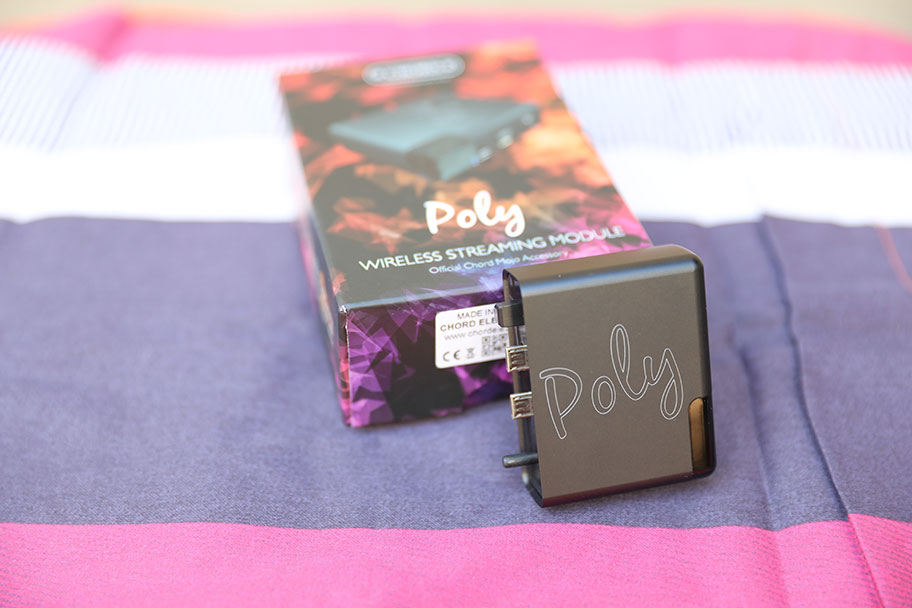
| Streamer | Price | Amp | DAC | Storage | App | Roon Ready | Resolution |
|---|---|---|---|---|---|---|---|
| Chord Electronics Poly | $749 | No | No | No | Yes | Yes | 32 bit / 768kHz |
| Sonore microRendu | $429 | No | No | No | No | Yes | 32 bit / 768kHz |
| iBasso DX220 | $979 | Yes | Yes | Yes | N/A | No | 32 bit / 384kHz |
| LG V30 | $259 | Yes | Yes | Yes | N/A | No | 32 bit / 384kHz |
| Chord Electronics Hugo 2 | $2,695 | Yes | Yes | No | Yes | No | 32 bit / 768kHz |
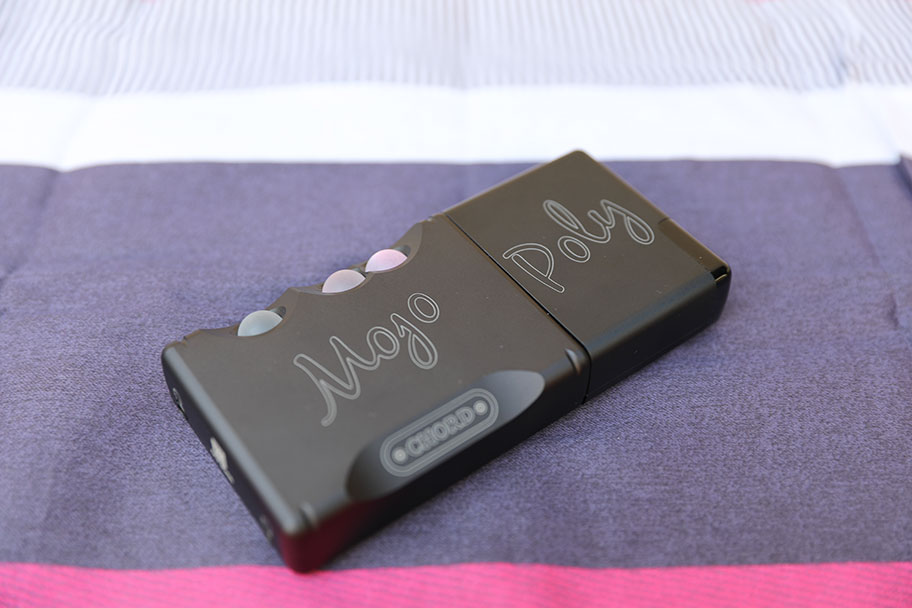
The Poly is such an unusual piece of equipment that finding direct comparisons are challenging. We can only think of one other piece of gear that performs the same function – i.e. making a piece of existing equipment Internet-capable. It’s the Sonore microRendu. It’s not really an exact analog to the Chord Poly – it’s connection is via ethernet cable, for one thing, so there’s no wireless capability. But it does sound good, and although we think it’s quite a bit more complex than it needs to be, it will get the job done. It’s around the same price as the Poly, at $629.
If you’d like the idea of portable audio, but don’t own a Mojo or don’t want to go through the complications of running a Poly, then a digital audio player may be what you need. Try the iBasso DX220. It’s the company’s latest model and it rocks. It gives you a huge range of file support, and while the sound quality isn’t quite as assured as the Mojo-Polly, the usability and functionality of the DX220 more than makes up for it. This is a single box solution that we think you’ll be very happy with.
If you’d rather leave off all this expensive gizmo nonsense, and just use your phone, then we’d suggest you at least use a phone known for its audio quality. The LG V30 has become a legend in audio circles, thanks to its incredible DAC chips. The sound quality that comes out of this smartphone is outstanding – again, not quite as good as a Mojo-Polly, but still superb. Sadly, it’s not a trend we see being replicated by other phone manufacturers any time soon…
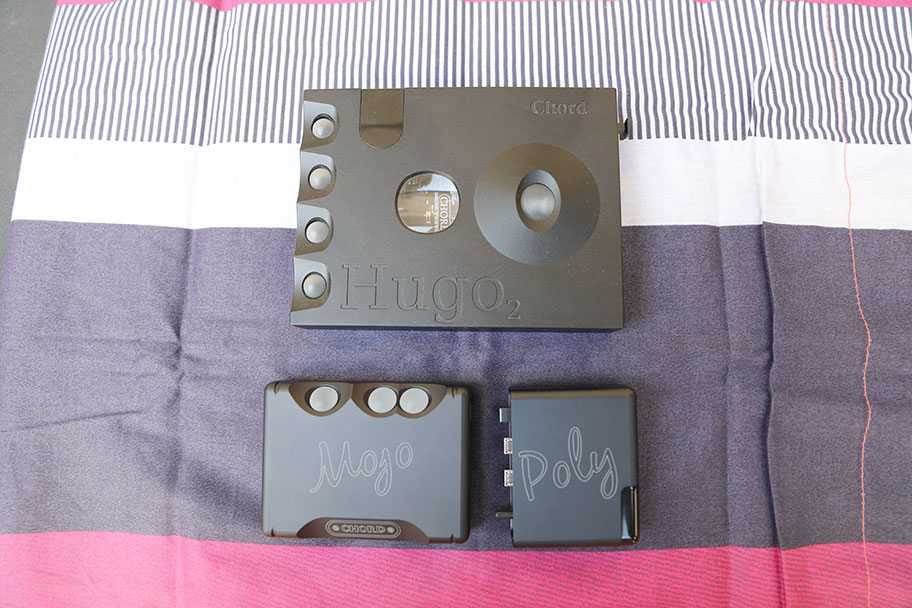
The bigger brother of the Mojo, the Hugo 2, may also be worth looking at. Admittedly, it doesn’t have a Wi-Fi connection – no Roon here – and there’s no Poly equivalent to make it so, but it’s one of the best DACs ever made. The Hugo 2 also comes with Bluetooth functionality, meaning you can get wireless audio. The sound is mind-blowingly good, although you’d expect it for the price, which is equally mind-blowing. It’s more than double the Mojo-Polly combo, at $2,695.